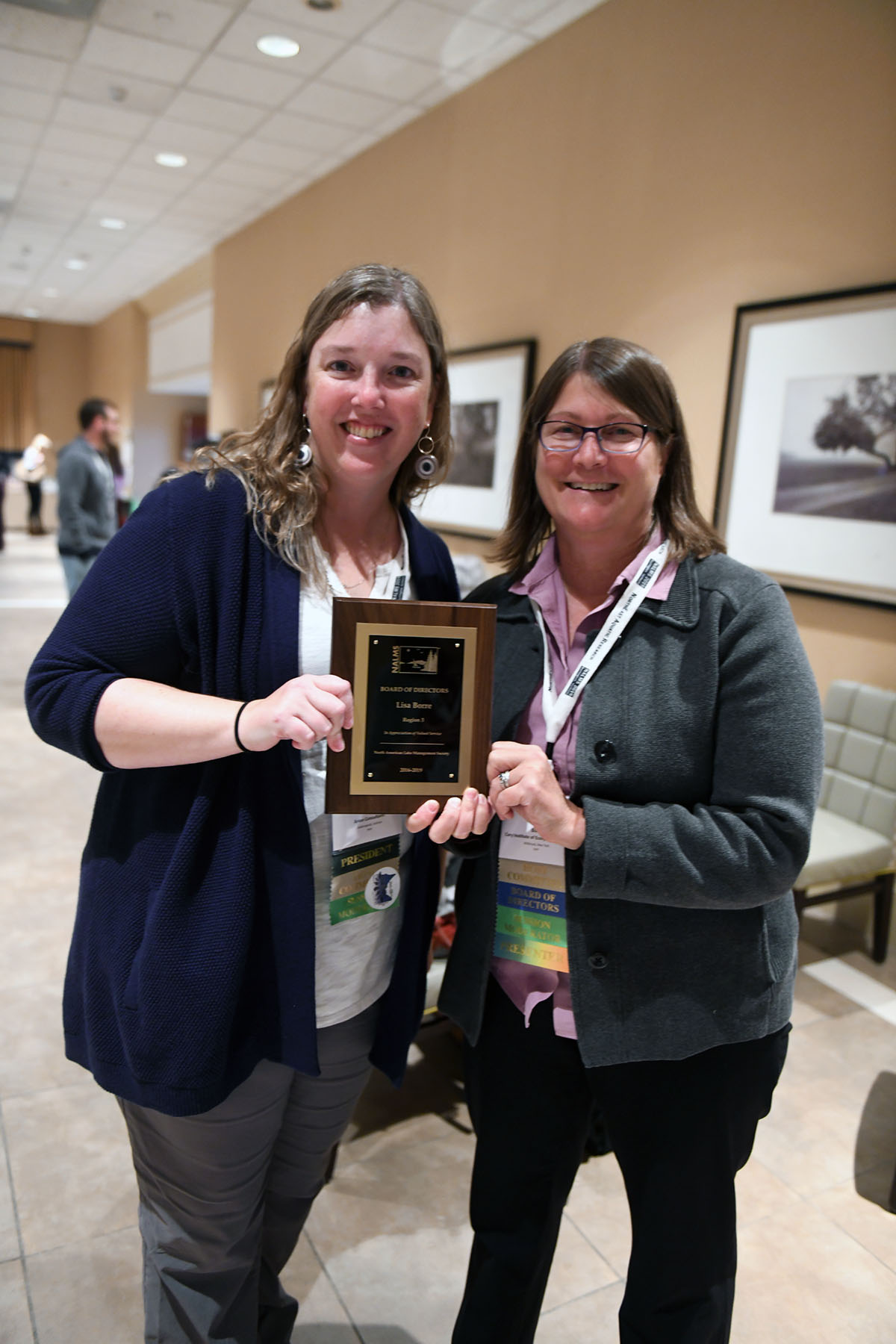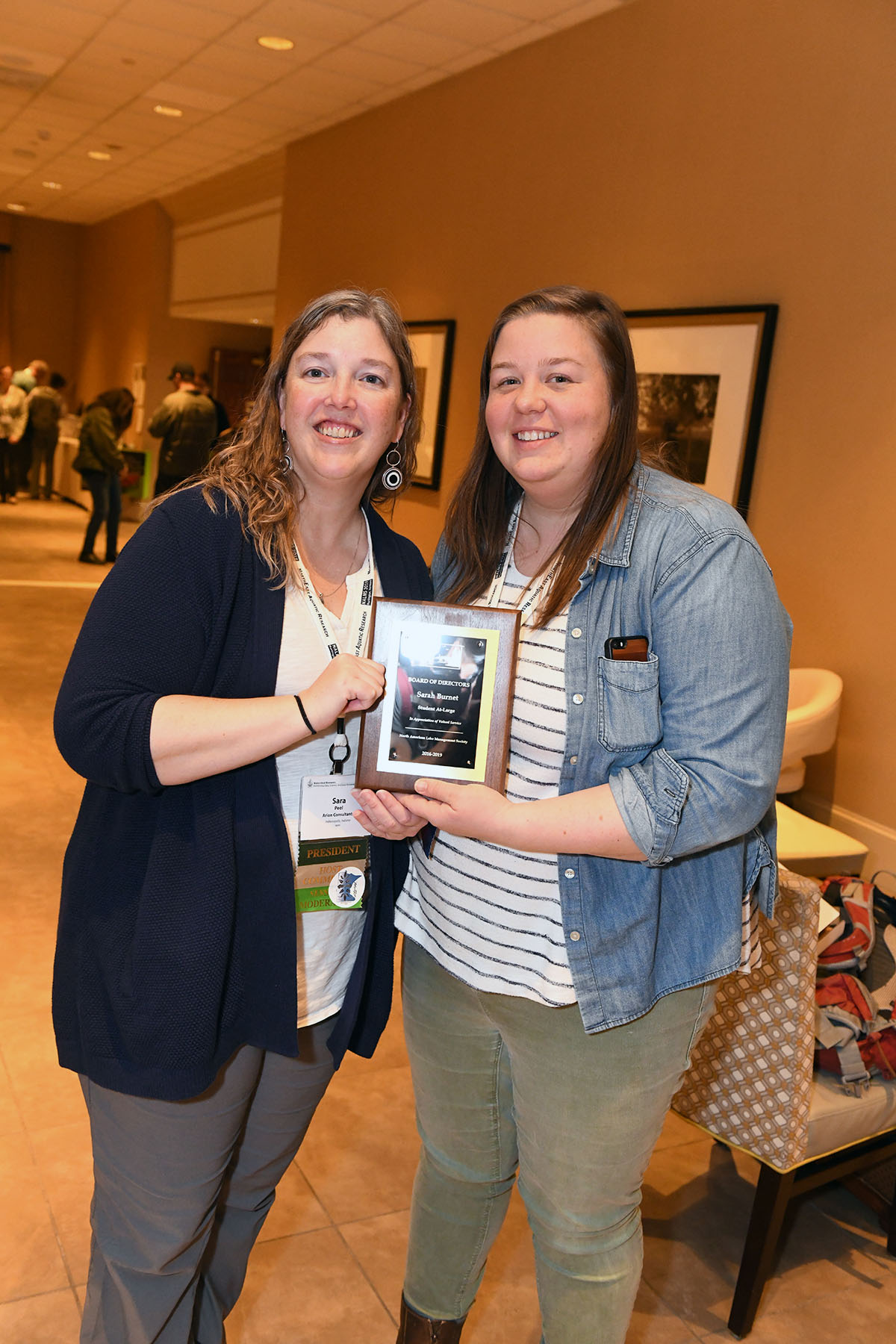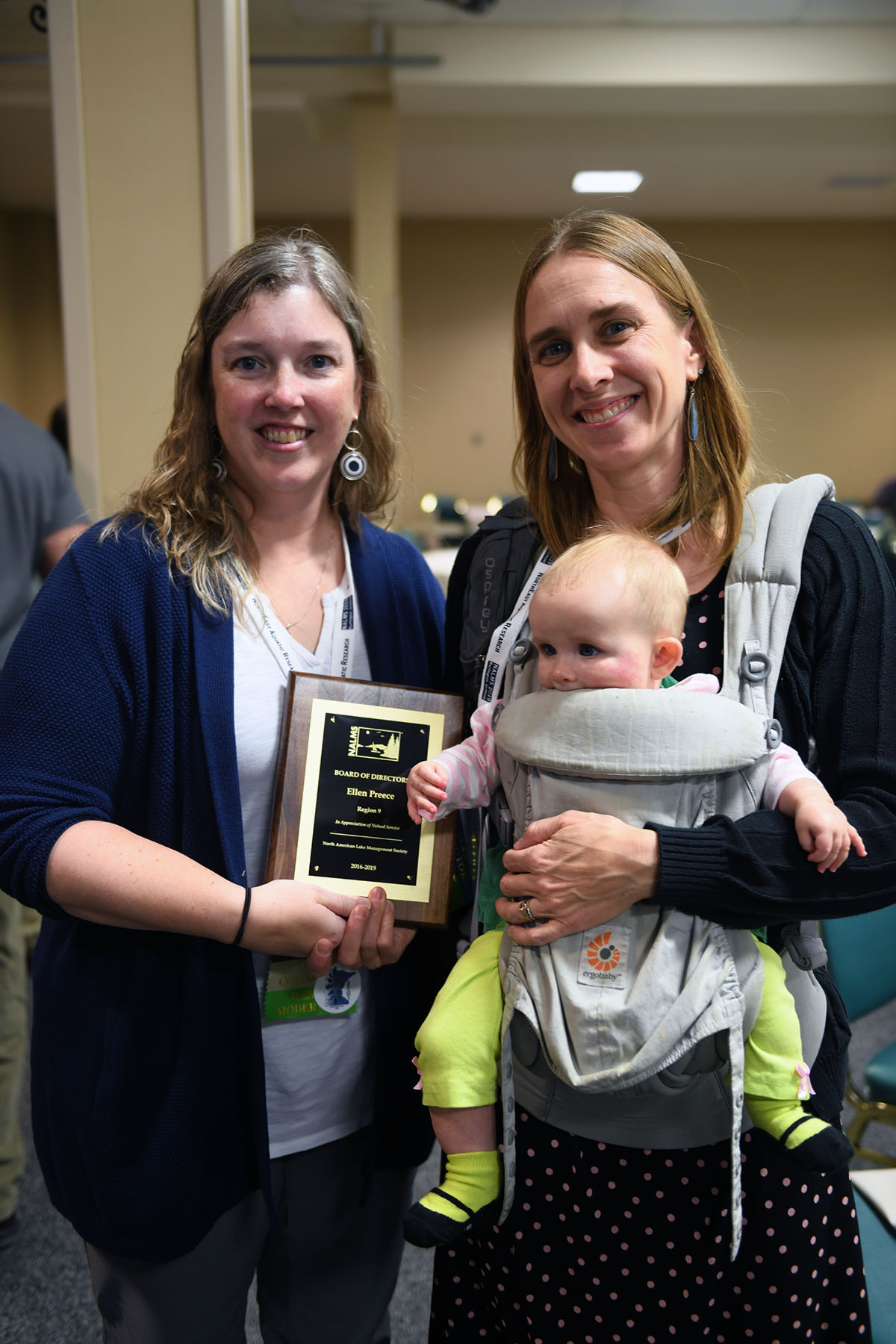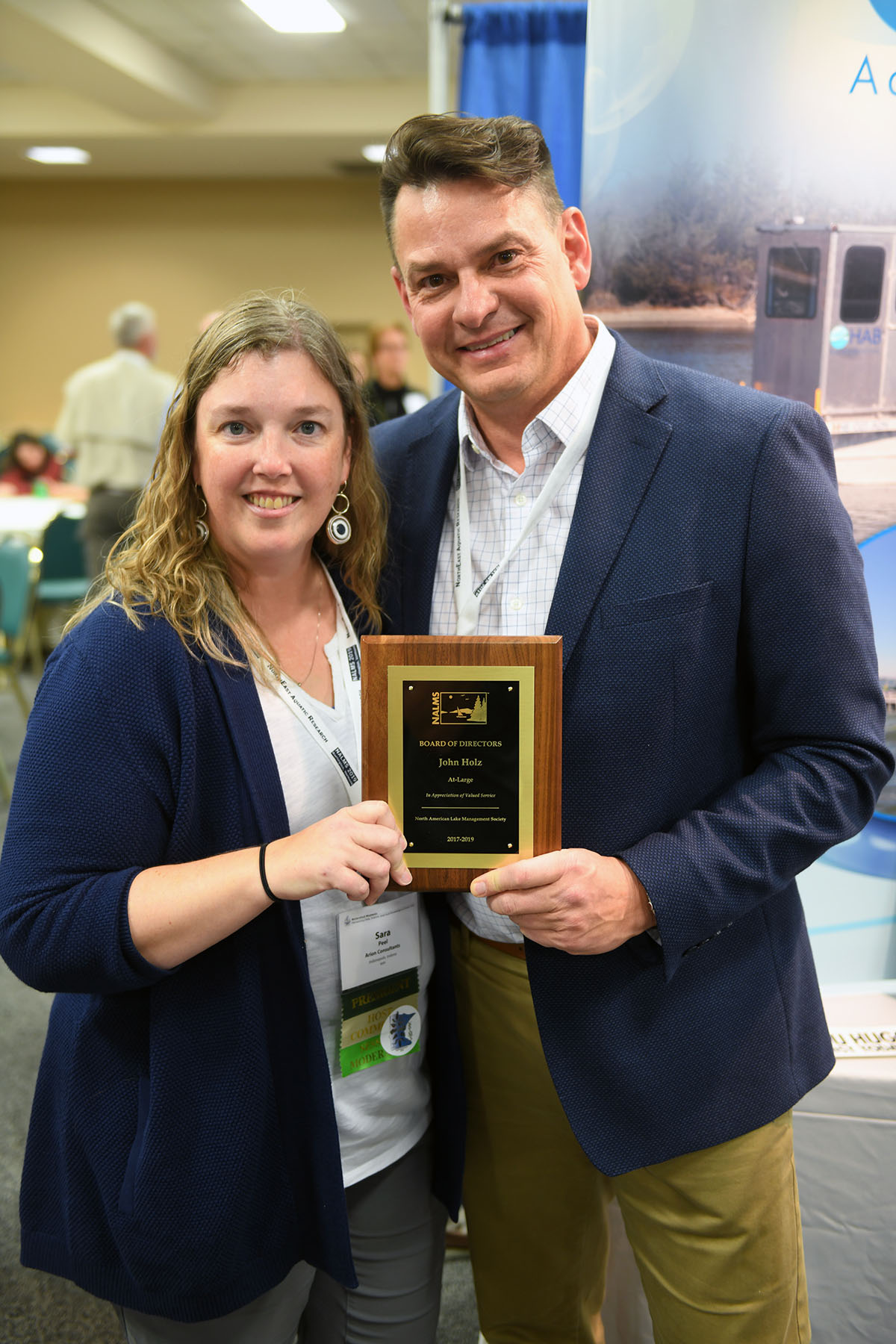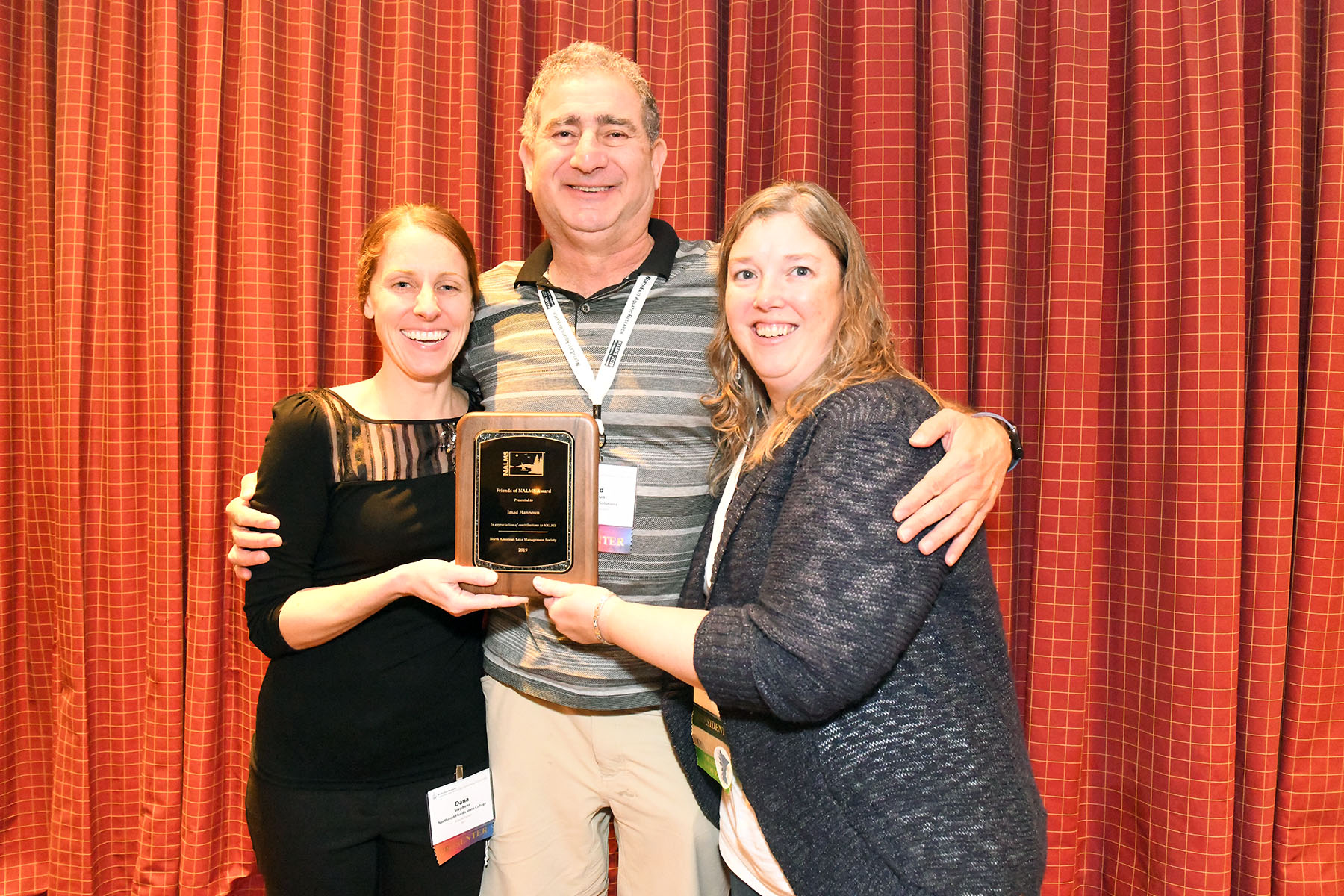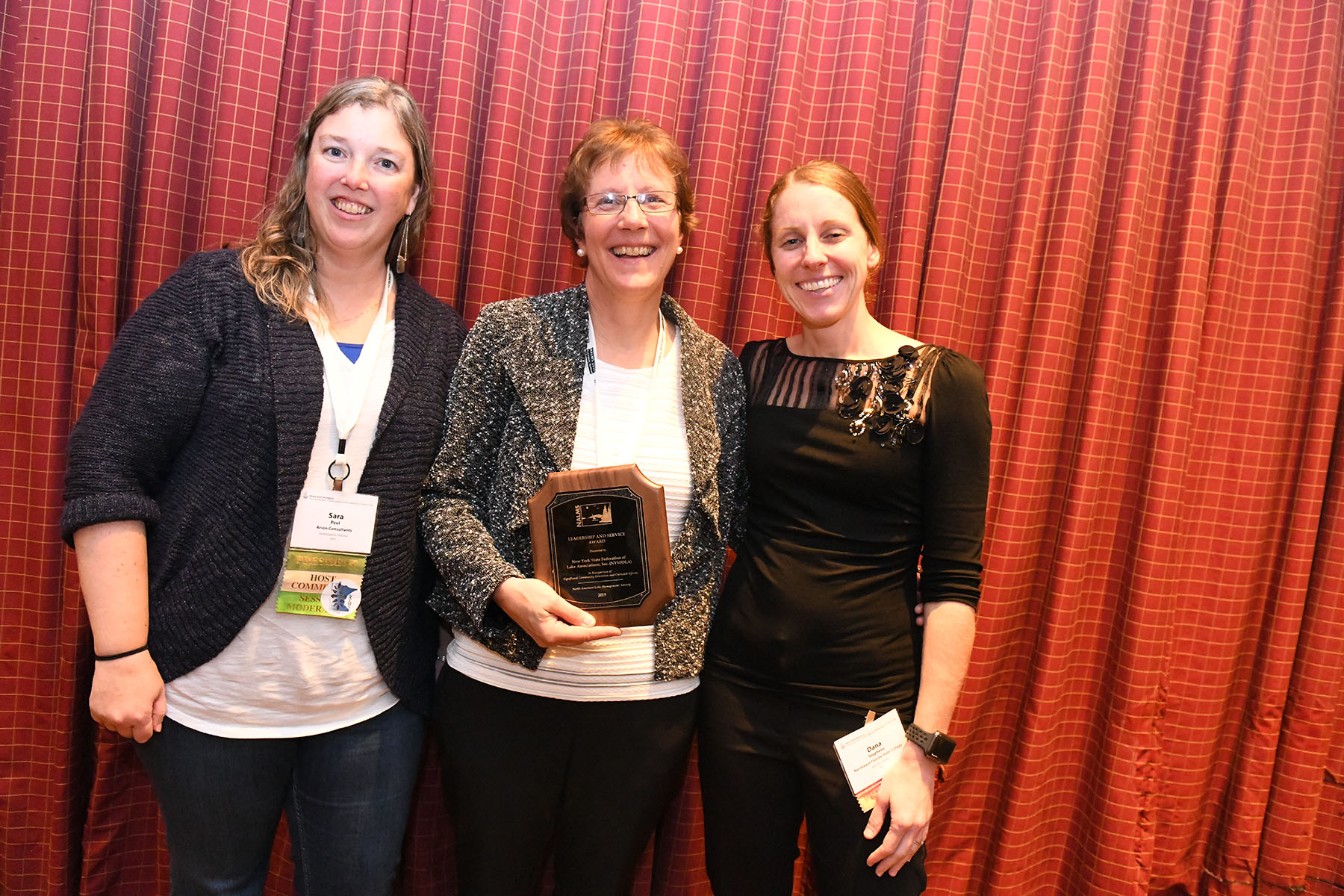2019 Achievement Award Nominations & Recipients
The North American Lake Management Society, NALMS, recognizes individuals, teams, and organizations for their efforts and contributions to enhance the management of lakes and reservoirs. Each year NALMS receives nomination letters from members and supporters lifting up their peers – individuals and groups – worthy of receiving recognition for their dedication to NALMS’ mission and/or for strides made in leadership, education, and lake management. It is with great honor that we share these nomination letters, as well as the 2019 award recipients recognized at the NALMS 39th annual symposium in Burlington, Vermont.
Outgoing Officers & Directors
NALMS is a product of devoted individuals volunteering their time and efforts as officers and directors to advance the NALMS’ mission. Thank you outgoing officer and directors!
Officer
- Frank Browne, Past President
Directors
- Ellen Kujawa, Region 1
- Lisa Borre, Region 3
- Eugene Braig, Region 5
- Ellen Preece, Region 9
- John Holz, At-Large
- Sarah Burnet, Student
Appreciation Award – Advancements in Lake Management Technologies
Dr. Dale Chess
Nominated by Phillip Cernera
Dr. Chess is a Limnologist for the Coeur d’Alene Tribe. As such he conducts his work in the largest Superfund site in the nation. This includes working in Coeur d’Alene Lake and the Coeur d’Alene River where over 150 million tons of heavy metals stored in riverine and lake bed sediments. These sediments undergo what is called, “benthic flux” under anoxic conditions. His work focuses on data collection and the use of a very sophisticated predictive 3-D model called, ELCOM (Estuary and Lake Computer Model) coupled with the Computer Aquatic Ecosystem Dynamics Model (CAEDYM) to simulate/predict lake processes. In general, the ELCOM-CAEDYM model simulates important processes within the lake system and its predictive application will help decision-makers determine whether or not EPA needs to spend billions of dollars addressing contamination in what is considered, by the local chamber of commerce and other State officials one of the most pristine lakes in the country. Currently local and State politics do not want Superfund actions in the Lake (the fear of Superfund stigma), so if contamination is left in place (and the lake continues to be treated as a toxic underwater repository) metals could mobilize into the water column and cause a cascading and catastrophic mobilization of metals into the water column.
Appreciation Award – Friends of NALMS Award
Imad Hannoun
Nominated by Todd Tietjen
My professional work with Imad has focused on the development, expansion, and utilization of the Lake Mead Model, a fine resolution, 3-dimensional mathematical model of a wide range of water quality parameters for the largest reservoir in the country. The model Imad worked to develop and improve through multiple firms has been used to guide over a billion dollars in infrastructure projects, has helped us begin to anticipate the impact a changing climate will have on water quality in the future, and greatly expanded our understanding of the limnology of Lake Mead. While I firmly believe that water quality models have a place, but limitations, in water quality management, the model of Lake Mead has revealed patterns in lake dynamics that we would not have seen through routine monitoring and data evaluation. Imad’s success in modeling Lake Mead has cost him our business as management decided that we needed a full-time modeler on staff. The work Imad did and oversaw is fundamental to the work and ongoing improvements to the mode that continue today.
Through NALMS I have worked with Imad most recently in his role as Publications Committee chair. Imad has worked with editors of both Lake and Reservoir Management and LakeLine through a wide range of changes and transitions. I have observed Imad as he worked with the committee and the editors to smooth transitions, to ensure continuity of product quality and production, and to aid the transition to new and different models of publication.
Through Water Quality Solutions Imad has sponsored the prizes for the photography contest at the annual symposia for several years. While a small contribution overall, it symbolizes Imad’s commitment to the organization overall, to the success of the publications that utilize these photographs, and to the development and cultivation of the membership by encouraging participation.
I also worked with Imad in the planning of the San Diego Symposium. Imad was an active and valuable member of our conference committee, while living on the opposite coast. Imad’s participation with us was far more than client cultivation, he worked hard to make the conference successful during difficult economic times and worked to bring the broader membership to a better understanding of western water issues.
Finally, I value Imad as a colleague and a friend. His cheerful, if goofy, attitude is always welcome and adds to my interactions with him. I value Imad’s willingness to share his expertise and experience and have benefited both in my work and professional development from knowing him. While Water Quality Solutions may be a smaller firm, Imad exemplifies the best our corporate members bring to the society and I believe NALMS benefits immensely from his membership and participation.
Also Nominated by Jeffery Pasek
Todd Tietjen has nominated Imad Hannoun for the Friends of NALMS Award. I am co-nominating Dr. Hannoun and add the following to Dr. Tietjen’s narrative.
My professional work with Dr. Hannoun dates to 1996 when he first used a mathematical model to assess using San Vicente Reservoir for a potable reuse/reservoir augmentation project. Since then Imad has been an integral part of the Pure Water San Diego team. Pure Water San Diego will provide one-third of the drinking water supply for 1.4 million people from highly treated recycled wastewater, by way of augmenting San Diego’s local water supply reservoirs. Imad’s extraordinary work utilizing three-dimensional hydrodynamic models of San Vicente, Otay, and Miramar Reservoirs to assess dilution and retention of the recycled water in the reservoir, and the water quality and ecosystem effects, has been key to these projects gaining both regulatory approvals and public support.
When I first met Imad he was living and working in California. He soon moved his company and his home to the eastern US, first to Pennsylvania and now Virginia. In spite of being on the other side of the country, he continued to be an active member of the California Lake Management Society, serving as a board member, vice president, and president. This year Imad and I are organizing the 34th Annual CALMS Conference, which will take place in San Diego in October and will be – mostly because of Imad’s tireless transcontinental work – the best CALMS event ever.
I value Imad’s professionalism, his knowledge, and his good humor and cheer. And I count him as a good friend.
Appreciation Award – Lake Management Success Stories
Mélanie Deslongchamps
Nominated by Sonja Behmel
Mélanie Deslongchamps, director-general of the Association for the protection of lake Saint-Charles (APEL), has worked in watershed management since 2000. The Saint-Charles River watershed is the main drinking water reservoir for the city of Québec, providing more than 300 000 citizens with their water. She has navigated, in all those years between scientists, citizens, decision-makers, government officials, journalists, lawsuits, etc. and has taken APEL from a pure grassroots organization to an internationally known organization with more than 26 employees and a natural parc, the northern marshes.
In addition, thanks to her work, it is now finally recognized that this watershed requires major restoration and protection measures. She achieved the scientific and political consensus that the work needs to be done: Conservation and restoration of the watershed through protection measures such as buying the land and protecting it; implementing major rainwater runoff management projects; studying cost and feasibility of connecting the more than 3000 homes on septic installations and two waste-water treatment plants to the sewer and more sophistic treatment plants of the city of Québec; having managed that all the stakeholders are working together in spite of very difficult political conditions with several lawsuits between the parties.
On top of all this, she manages a team of scientists, technicians, communication specialists, engineers, etc. Thanks to her, this watershed is the best documented and up to date watershed in the province of Québec and several technologies that have now been widely adopted (even in France), have taken their issue at APEL. She managed to do this while she is raising two beautiful little girls. Finally, she just received an award for a television series on the necessity of watershed protection, a series for which she wrote the script and the ideas. http://www.apel-maraisdunord.org/apel/
Leadership and Service Award – Community Education and Outreach
New York State Federation of Lake Associations, Inc. (NYSFOLA)
Nominated by Chris Doyle
The New York State Federation of Lake Associations, Inc. (NYSFOLA) was established in 1983 with a mission to “protect the water resources of New York State by assisting local organizations and individuals through public dialogue, education, information exchange, and collaborative efforts.” The organization now represents nearly 250 lake associations across the state and serves to provide educational outreach to them in many different ways.
The first goal of NYSFOLA was to establish a volunteer lake monitoring program in New York. In 1985, the Citizens Statewide Lake Assessment Program (CSLAP) was created at the NYS Department of Environmental Conservation (DEC). NYSFOLA has collaborated with DEC to run the program since it began as a pilot on 25 lakes. This year, over 176 sites will be monitored across the state by nearly 400 volunteers. NYSFOLA is charged with running the day-to-day operations of the program and working directly with the volunteers and laboratory to ensure a high-quality dataset.
NYSFOLA has also collaborated with DEC to publish two editions of “Diet for a Small Lake: A New Yorker’s Guide to Lake and Watershed Management.” Thousands of copies of this “lakes for the layperson” publication have been sold in all 50 states and several international countries.
NYSFOLA’s annual conference is held each spring with a large crowd of lakefront property owners, government officials, lake management professionals, and academic researchers in attendance. A wide variety of topics– from aquatic invasive species to dam safety are covered over the two days of the conference, in addition to the annual training session for new CSLAP volunteers, conducted no matter what the weather brings.
In addition, NYFOLA keeps its members current on a wide range of issues through its “Waterworks” newsletter, Facebook page, website, and regional conferences. The organization has encouraged the formation of regional lake groups and collaborates with a wide range of lake-related organizations including, but not limited to, the Madison County Federation of Lake Associations, the Adirondack Lakes Alliance, the Finger Lakes Regional Watershed Protection Alliance, the Cortland-Onondaga Federation of Kettle Lakes Association, and the Indian River Lakes Conservancy. NYSFOLA Manager Nancy Mueller and members of the NYSFOLA Board of Directors are frequent speakers at these conferences and general lake association meetings.
Over the last decade, NYSFOLA has supported the efforts of the SUNY Oneonta graduate program in Lake Management to develop the next generation of lake managers and to assist member lake associations with the preparation of lake management plans. Each year, NYSFOLA provides scholarship assistance so that a deserving member lake association can participate in the program.
NYSFOLA has been a long-time member and active supporter of NALMS and its national goals. They became a “chapter” in 1993 and have remained as an “affiliate” ever since. They have supported many Region 2 NALMS Board Members and were the host committee of the 2015 NALMS International Symposium in Saratoga Springs, New York.
I have personally been active with NYSFOLA for over 14 years. For their 35+ years of accomplishments, it is with great pleasure that I nominate NYSFOLA as a 2019 recipient of the NALMS Leadership and Service Award-Community Education and Outreach.

